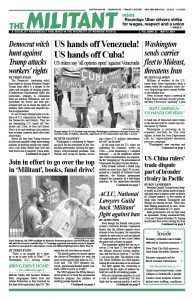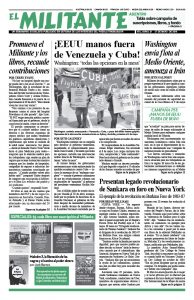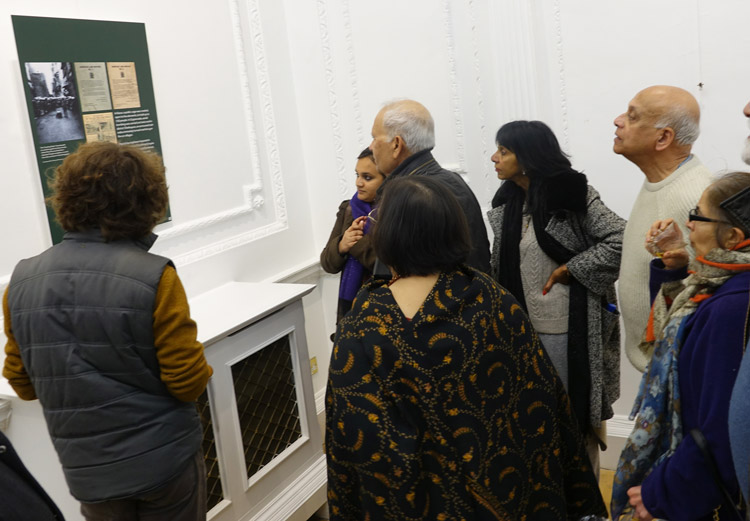![]()
![]() LONDON — On April 13, 1919, troops of the British Empire’s colonial Indian Army fired on thousands of unarmed protesters in Amritsar, capital of the Punjab. The turkey shoot lasted without pause for 10 minutes leaving hundreds dead and thousands injured. Commanding Officer Gen. Reginald Dyer then ordered all Indians to stay off the streets for 24 hours, preventing any aid from getting to the wounded.
LONDON — On April 13, 1919, troops of the British Empire’s colonial Indian Army fired on thousands of unarmed protesters in Amritsar, capital of the Punjab. The turkey shoot lasted without pause for 10 minutes leaving hundreds dead and thousands injured. Commanding Officer Gen. Reginald Dyer then ordered all Indians to stay off the streets for 24 hours, preventing any aid from getting to the wounded.
A reign of terror ensued. Public floggings, mass arrests, prisoners bound and caged unprotected in the sun, planes bombing workers in the fields, electricity and water supply cut from homes, and curfews and press censorship were authorized by Punjab Lt. Gov. Michael O’Dwyer under martial law granted by King George V’s Viceroy of India, Lord Chelmsford.
This massacre was one of the most deadly in the couple hundred years British capital held sway worldwide. It is being commemorated in India and the U.K. with exhibits, films, music, poetry readings and talks — in Amritsar, Delhi, London and Manchester. Materials include books, contemporary documents, photos and eyewitness accounts.
The exhibit launch in London featured a film of photos of the mobilizations of masses of Indian working people that preceded the massacre. Their demonstrations and strikes were fueled by wartime famine and postwar inflation and shortages; job cuts arising from a slump in the textile industry; new taxes; attacks on Hindu religious practices and threats to Muslim holy sites; and so-called anti-terror legislation — the Rowlatt Acts — that authorized detention for two years without trial and searches without warrant.
A nationwide strike on April 6, 1919, shut down the Punjab. The rebellion deepened after the arrests and detentions of some of its prominent leaders. For a few days a 50-member People’s Committee held power in the Punjabi city of Lahore.
British rulers’ ‘divide and rule’
This united struggle by working people — Hindu, Muslim and Sikh — terrified the empire’s rulers. From 18th century exploitation under the East India Company through direct rule imposed in 1858, to the massacre, and then on to the World War II government of Winston Churchill, the British colonial rulers’ watchword had been “divide and rule.” This guided how they inflamed religious antagonisms to split the country between India and Pakistan when mass struggles forced them to cede power after the second imperialist world war, in an effort to exploit their continuing economic interests in the region.
The revolt by Indian workers and peasants, described by Karl Marx and Frederick Engels in First Indian War of Independence, 1857-1859, had made London fearful of any moves to fight against their colonial rule. Their fear was deepened by the 1917 Russian Revolution, which gave hope to millions throughout the colonial world, and the founding of the Communist International — a month before the Amritsar massacre — aimed at fostering the construction of revolutionary parties that could emulate the Bolsheviks by leading workers and farmers to power. A rise of union militancy in Britain, insurgency in other British colonies, including Ireland, and mutinies in the empire’s army fueled by troops demanding to go home intensified the rulers’ trepidation.
“It was no longer a question of merely dispersing the crowd,” Dyer said after leading the massacre, but one of producing a “moral effect” that would ensure submission.
The Manchester exhibit came out of collaboration with the Partition Museum in Amritsar. Manchester Museum Director Esme Ward told the Militant that a diverse audience of 500 attended the opening. It included a musical performance by Aziz Ibrahim, formerly of Simply Red and Guns and Roses, who used archive recordings to bring home the length of the shooting. “Museum organizers have a duty to speak the truth about history that is often hidden,” she said.
As the exhibits opened in different cities, they have all featured the infamous “Crawling Lane.” This was a street where an English missionary had been attacked, and any Indians entering there were forced by soldiers’ rifle butts and bayonets to crawl on their hands and knees.
Andrés Mendoza, Communist League candidate for the East of England constituency in the European Parliament elections, told the Militant that the capitalist rulers in the U.K. have continued to participate in imperialist atrocities worldwide. He pointed to London’s participation in the “turkey shoot” in the 1990-91 Gulf War and the subsequent carnage in the 2003-11 war on Iraq.
“What’s different from 1919 is the U.K. rulers’ decline as a world power,” he said. “The Communist League demands all U.K. and foreign troops should be brought home. That would pay real tribute to working people in India and elsewhere who have been victims of British capitalism’s atrocities — of which Amritsar is a prime example.”



